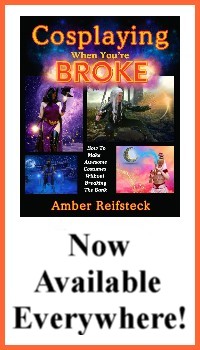Do Bunnies Lay Eggs? – How the Pairing of These Now Common Easter Symbols Came About
 A question many people ask themselves this time of year is what bunnies have to do with eggs. Sometimes this leads to the question: Do Bunnies Lay Eggs?
A question many people ask themselves this time of year is what bunnies have to do with eggs. Sometimes this leads to the question: Do Bunnies Lay Eggs?
The answer to that is no, bunnies do not lay eggs. Like other mammals (the duck-billed platypus and the echidna aside), rabbits give birth to live young. They do not lay eggs, not even the Easter Bunny, and certainly not the brightly colored eggs now associated with the season. So what then is the connection between these now famous symbols of Easter and how did their pairing come about? Many people are surprised to learn that the answer predates the holiday itself.
The traditional Easter symbolism of the rabbit and the eggs is actually derived from ancient pagan lore not Christian legends (hence why there are no stories about a bunch rabbits with Jesus in the Bible). European pagans, from Saxons to Germanics, celebrated spring festivals at the time of the equinox for centuries before the birth of Christ. Many of these festivals centered around the goddess of springtime and fertility. This goddess was called Eostre, Ostara, Astarte, or Ishtar, depending upon the tradition, and it is the goddess’s name from which was derived the name of the holiday Easter. The hare was the symbol of this goddess, and thus became the Easter Bunny.
The egg was another symbol of the pagan spring festival. The egg symbolized rebirth, like the rebirth that occurs during the spring. Eggs were painted during the spring season to be used as decorations during the equinox festivals, a custom that was even seen as far away as the Persians lands. This ancient practice led to our modern-day tradition of dyeing eggs for display.
During the early days of Christianity, many pagans were reluctant to abandon their old faith for the new. So instead of being completely erased, many of the old symbols, were assimilated into the new religion. The death of Jesus is recorded to have occurred in the spring month of Nissan on the Jewish calendar. This would have placed it around the general timeframe of the pagan spring festivals and thus it provided the ideal opportunity for a meshing of the two religions. The pagan symbol of the egg that previously represented the spring rebirth, became the symbol of Christ’s rebirth at the resurrection, thus merging the old prevalent pagan traditions with the new Christian ones, and easing the pagans into the new religion. In time the pagan origin of the symbol was completely forgotten and it became a standard Christian symbol of rebirth.
Easter was officially declared a religious holiday in 325 A.D, by the Nicean Council. As the pagan spring festival was celebrated on the vernal equinox, the church decided to incorporate the date into the Easter celebrations without actually having the two holidays on the same day. This was determined by observing the first full moon after the equinox. Today we celebrated Easter on the Sunday following the first full moon after the vernal equinox. The exception to this is when the full moon falls on the equinox itself, in which case, Easter is celebrated on the Sunday after the next full moon. (And that is why the holiday always seems to be jumping around the calendar.)
By Amber Reifsteck ~ The Woodland Elf
The information provided on this website is for general information purposes only. If you choose to rely on the information on this website, you do so at your own risk and you assume responsibility for the results. (Full disclaimer here)
Enjoy this post? Click here to subscribe by email and get new posts delivered to your inbox.Ads by Google








